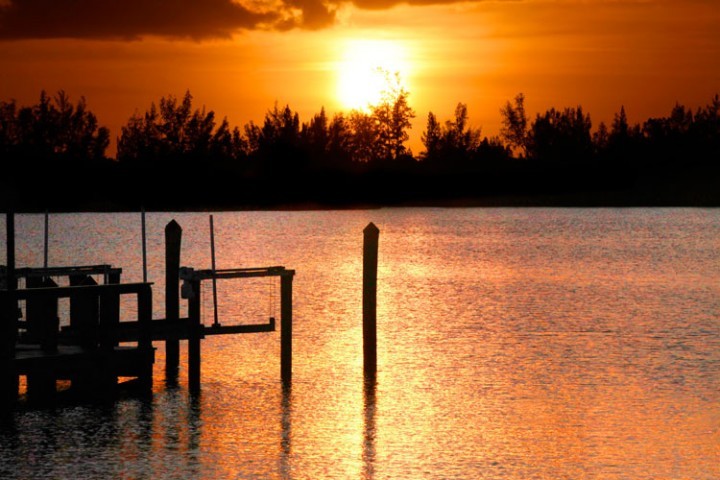The Indian River Land Trust is in the midst of a large-scale scientific experiment at its 111-acre Bee Gum Point property that could have a major positive impact on the imperiled ecology of the entire Lagoon.
Some years ago, the natural flow of water from the Lagoon into the wetlands at the western end of Fred Tuerk Drive was artificially cut off to aid in mosquito control. Only one small culvert was provided to create a minimal wintertime flow of water into the wetlands.
Now, seven additional culverts have been installed and two more will be put in place in the weeks ahead.
All the culverts will remain closed from late April to early October for mosquito control purposes. But in the winter, the added pipes are already providing much greater connectivity between the wetlands and the open lagoon. As the tides rise and fall and wind pushes waves ashore, more water can now wash into and out of the wetlands, allowing small fish to enter and – hopefully – large fish to exit.
“Our goal is to return a tidal connection between on-site wetlands and the adjacent Lagoon,” said David Heuberger, the Land Trust’s director of land protection. “If this works here, it could be used in wetlands up and down the waterway and have a major impact on water quality and fish populations.”
Snook, tarpon and other gamefish enter wetlands as small fry and mature there in relative safety before returning to the lagoon. The wetlands offer the fish safety from predators: Heuberger explained that tarpon and snook are actually able to gulp air for brief periods, and thus survive in very shallow water, where predators can’t reach them.
The problem is that small fish and larvae wash into these wetlands on incoming tides but, as the juveniles grow, they become stranded, unable to return to the lagoon waters. With nowhere to go, they begin to cannibalize, thwarting nature’s design and reducing fish populations.
Because gamefish have such a significant economic impact in communities along the Lagoon, Tarpon and Snook were chosen for observation. They are considered an “umbrella species,” Heuberger said, because the way they respond to various environmental circumstances mirrors the way the other local gamefish will respond.
To learn how the fish respond to the new culverts, graduate students and their professors captured 250 gamefish and “tagged” them, utilizing a high-tech system rather like that used in the new Sun Pass cards. The tags allow the fish to be tracked electronically to see which ones return to lagoon and which remain in the Bee Gum wetlands.
With the culverts in place and open, the hope is that the juvenile fish will find their way back to the Lagoon to fully mature and reproduce.
So far, that has not been observed, but what has been observed is intriguing: When a culvert is opened and the wetlands get a fresh inflow from the Lagoon, all the fish swim right up to the “mouth” of the culvert, hang out there, but go no further. “Maybe they just don’t want to swim into that long, dark (40-foot) tunnel,” said Heuberger. “Our grad students think that, with the first big cold snap, they’ll come out.”
The case study is expected to provide valuable information about the wetlands/lagoon connection and the impact of adjusting culvert cycles and flow. Land Trust Executive Director Ken Grudens said that the Mosquito Control District is willing to consider opening the culverts more frequently. “If this works, it could benefit the entire estuary.”
Established in 1990 to save McKee Botanical Garden, the Land Trust is an 800-member organization that focuses on preserving environmentally important land and water resources, protecting scenic waterfront areas and providing access for public recreation and education.
The 2011 purchase of Bee Gum Point – the largest piece of conservation property acquired in the Trust’s 20-year history – was part of a startlingly successful campaign of waterfront land acquisition begun by the organization in 2009 that has conserved 957 acres and miles of shoreline in recent years.
“In 2008, our board recognized we had a historic opportunity to protect the lagoon and habitat near it,” says Grudens. “Because of the real estate downturn and failed developments along the water, extraordinary pieces of land were potentially available for conservation that would have been out of reach before.”
According to Grudens, the board mobilized and “put together an all-out effort to look at properties along the lagoon and strategically determine which were most important to preserve.”
The Bee Gum Point property is situated along the Atlantic Flyway, a major corridor for millions of migrating birds each year, and the initial purpose of the purchase was to protect important bird habitat. As it turned out, the property’s size, configuration and numerous tidal pools made it an ideal location for the hydrologic restoration project.

